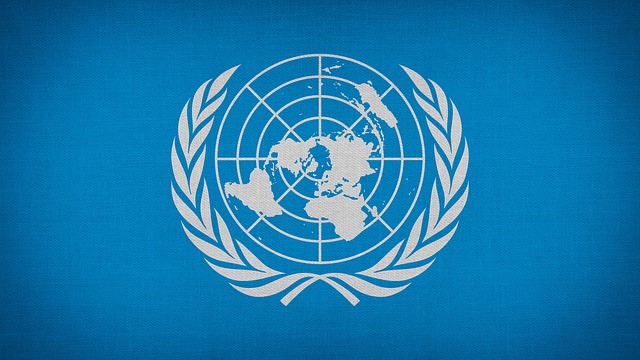
No matter how some try to spin it: Child labor cannot be glossed over. It robs girls and boys of their childhood and both their mental and physical health usually bear long-term damage. So why does it continue to exist? In Part 2 of our article series, we shed light on how child labor occurs in the first place, how the Covid-19 pandemic led to an increase in exploitative conditions, and what countries around the world are doing to stop this sad trend.
IT’S ALL A QUESTION OF MONEY
Sometimes the exploitation of children is visible to the naked eye, but sometimes it takes place hidden away from the rest of the world. But the fact that it does take place, and on every continent, cannot be denied. The reasons for child labor are as varied as the types of exploitation themselves, but one cause dominates: material poverty. The fewer opportunities adults have to provide financial support and social security for their own households, the greater the risk that children will also have to help out. It is not uncommon for children to drop out of school when they have to help out, which makes them even more vulnerable to exploitative work situations.

Speaking of schools, the education system also affects how prevalent child labor is in a region. Overcrowded classrooms, poorly trained teachers, and costly school fees and supplies are among the main reasons why more than 260 million children – especially those from poor families – currently do not receive an adequate education. Armed conflicts in war-torn areas add to the already alarmingly high numbers of children not attending school and dropping out of school, who are affected by child labor or may become so in the future. If you take a look at areas of the world that are frequently hit by weather extremes, you will also see that climate change is also correlated with the number of child laborers. Crop failures and the like often present farmers with severe financial problems. To cushion the blow, children often help out in the fields or take on dangerous work in nearby villages in order to contribute to the family income. As different as the reasons for child labor are, however, they have one thing in common: they could all be remedied – if politicians would take them on.
EFFECTS OF THE COVID-19 PANDEMIC

Where child labor prevails, globally applicable children’s rights are simply ignored. Currently, this is the case more than 160 million times, because just as many children are victims of exploitative child labor – a figure that has risen for the first time in two decades as a result of the pandemic. The report by the International Labor Organization (ILO for short) and the United Nations Children’s Fund UNICEF paints a particularly worrying picture. While various measures in areas such as education, justice or social protection reduced the number of girls and boys in child labor by 94 million between 2000 and 2016, the loss of jobs and income in the Corona period resulted in a significant increase in the number of victims. The reason: in times of crisis, many families resorted to child labor as a coping mechanism.
In addition, school closures during the lockdown increased the risk that girls and boys would have to provide additional financial support to their parents – especially children in vulnerable situations, as they were even more likely to work when school was not an option. And these were not few: Pandemic-related school closures ultimately affected more than 90% of students worldwide, and 463 million students were also unable to even participate in distance learning due to a lack of facilities. As if that were not enough, when children leave school for paid employment, it is usually very difficult for them to resume their schooling. Without a policy response, the education emergency can easily turn into a child labor emergency.
AGENDA 2030
Whether by improving laws or by increasing the promotion of schooling for children as well as decent work for adults: When unemployment and poverty and, as a result, child labor increase, politics are called upon. Measures vary from country to country and are mostly adapted to national circumstances, but there are also various conventions and investments at the international level that directly address child labor. For example, UNICEF, together with Save the Children and the UN Global Compact, has developed principles that point out to companies how they can protect and promote children’s rights. This includes companies actively ensuring that their value chain is free of child labor.
Specific measures such as the TACKLE project or the CLEAR Cotton project also aim to abolish child labor. The focus of these projects is on education. As one of the most effective means of combating child labor, education helps to take children out of exploitative working conditions and thus provide them with alternative educational opportunities that support their and their families’ livelihoods.

The year 2021 was also declared the Year for the Elimination of Child Labor by the United Nations General Assembly. The ILO and UNICEF called on all countries to end child labor in all its forms by 2025. Just a few years earlier, the 2030 Agenda and its 17 Sustainable Development Goals were also adopted, which also included approaches to combating child labor, which were again highlighted and emphasized in 2021, such as Goal 8.7. However, the current development trend, driven by the Covid 19 pandemic, casts doubt on whether it is possible to completely end child labor in just two years. This makes it all the more important now for governments to invest in good education for children – especially children from poor families – and also to increase their scrutiny of employers. Time is pressing, with less than 550 days now until 2025.
Translated by Emily Schiffer
#ChildLabor #CombatingChildLabor #ChildRights #Covid-19-Pandemic #Agenda2030 #AgainstHumanTrafficking #AgainstTrafficking #EndExploitation #EndTrafficking #HopeForTheFuture #Austria
